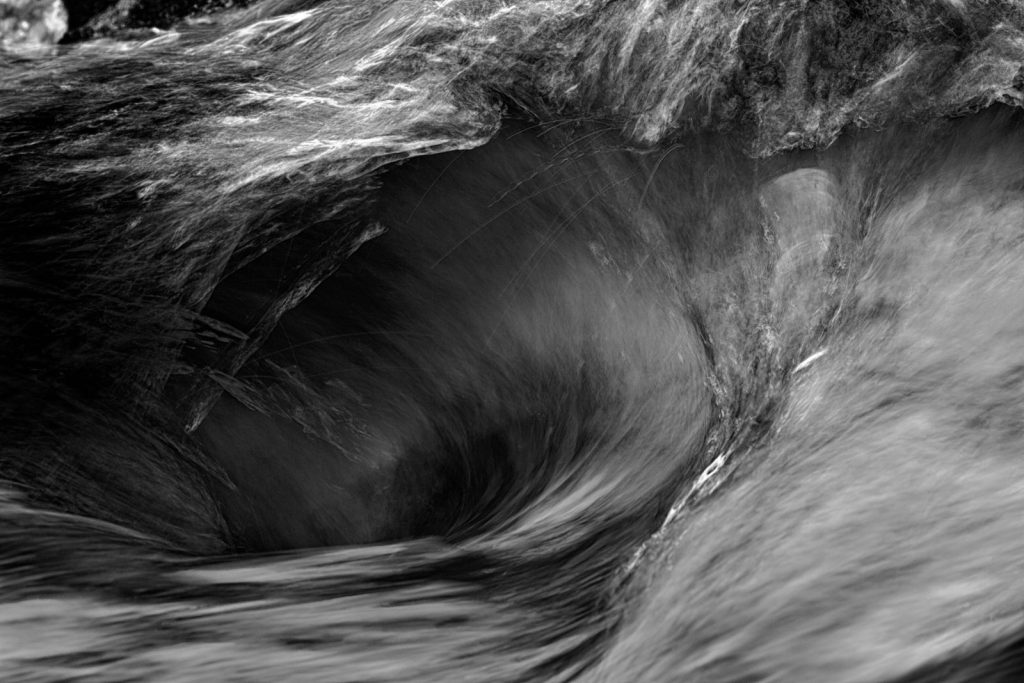One afternoon in 1986, while I was on a two-week mindfulness retreat on the coast of Hawaii, the bell to end the meditation period rang only ten minutes after the session had begun. The retreat manager announced that she’d been notified by the Civil Defense office in Hilo that an earthquake off the coast of Japan had caused a tidal wave. The wave was crossing the ocean in our direction and was projected to arrive in three hours. “We have seventy people here,” she said, “and only one car. Since there are no available buses to send from Hilo,” she continued, “and we can’t leave, the Civil Defense told us to take high ground and organize our supplies in case we get stranded.”
We were living in two-story bungalows on a beach ringed by thick jungle. The best we could do to “take high ground” was go upstairs. We collected matches, crackers, fruit, and flashlights and brought them to the second-floor room we were using as our communal meditation space. We filled the bathtubs with fresh water lest the water pipes burst. When we had finished preparing, we took our seats around the room. Most of us, facing our teacher, were also facing a wall-to-wall window that looked out across the sea to the flat horizon.
The teacher, Joseph Goldstein, told the story of a Zen master of long ago who was asked, “What would you do if the waters of the north and the south and the east and the west all rose around you?” The Zen master, Joseph continued, was reported to have said, “I would just sit.” Joseph said, “Let’s sit.”
I closed my eyes and then opened them again, checking the horizon. I felt my heart pounding. Imagining what a wall of water moving toward us would look like, I was terrified. I closed my eyes and noticed that the room felt unusually quiet. I took a breath and felt it enough to have it catch my attention.
Out of habit, I began to name my experience to myself: Breath in, breath out. Breath in, breath out. It’s very quiet. My hands are cold. My heart is pounding. I am trembling. I heard my mind saying, “I don’t want to drown,” and also, “Take a breath, Sylvia. Now another one.” I noticed my mind quieting down as I named breaths. “In. Out. In. Out.” I remember feeling surprised to find that my hands felt warmer and my heart had stopped pounding. “Maybe the tidal wave will happen,” I thought. “Maybe not. I don’t know.”
Realizing that I didn’t know provided a moment of relief. I opened my eyes. It was windy outside, and I could see the palms swaying. I noticed that one man was watching the sea with binoculars, and I recall feeling touched by that, imagining him thinking that his checking close-up could make a difference. My good friend James was sitting next to me. I thought about James’s pregnant wife, Jane, at home in Berkeley, and I suddenly wanted very much for us all to survive so that James could be home when his child was born. James’s hands were folded in his lap, as were mine. I reached over and tapped his knee and held out my hand. He reached for it, and we sat for a long while. I noticed my friend Len, an executive with KCBS in San Francisco, sitting across the room, and I thought, “If we survive, Len should be the first to use the phone. He could let the radio station know that we’re all okay, and then KCBS could broadcast that news across the country to reassure our relatives.”
The tidal wave never arrived. It passed south of Hawaii. It’s more than twenty years now since that day, and I find that when I remember the event, the drama of it is not what I think about. After all, we did survive. What continues to inspire me, as I recall that day, is how my experience changed when I was able to shift my attention from personal fear to our communal lot. We were all threatened. We all wanted to live. We all had family or friends who loved us. The outcome of our situation was completely out of our control. And I cared. Of course I cared about myself, and I thought about my family and hoped they would not lose me. But I realized that I felt better—as if a burden had shifted—when I thought about other people’s families, too. Perhaps that’s the clue about the happiness inherent in caring connections. The frightened “I” who struggles is replaced by the “we” who do this difficult life together, looking after one other. Holding hands.
♦
From Happiness Is an Inside Job: Practicing for a Joyful Life © 2008 by Sylvia Boorstein. Reprinted with the permission of Ballantine Books.
Thank you for subscribing to Tricycle! As a nonprofit, we depend on readers like you to keep Buddhist teachings and practices widely available.
